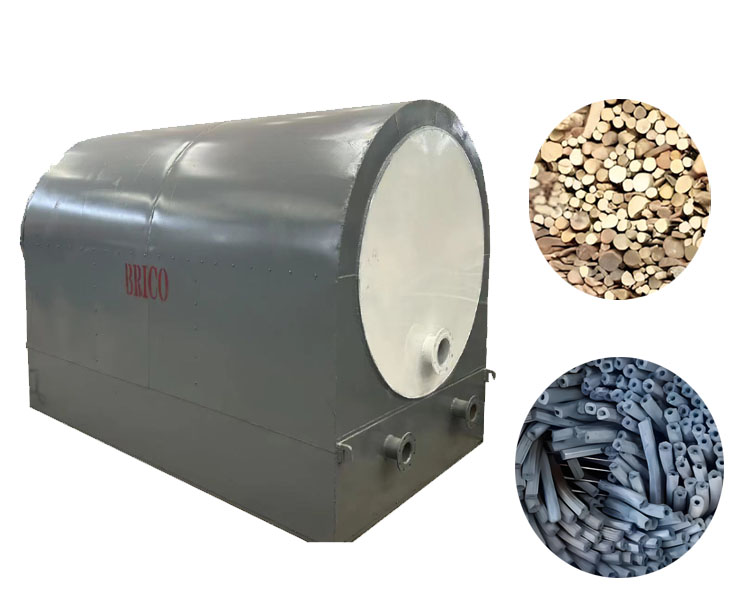Carbonization furnace
Carbonization furnace/continuous drying
The principle of a carbonization furnace is to use the flue gas generated by internal combustion of materials for secondary heating and calcination, and the flue gas returns to the bottom for heating. During the carbonization process, the combustion energy can be recycled to achieve the effect of clean smoke circulation and fuel saving. At the same time, during the carbonization process, the acetic acid, tar, gas, etc. produced by the materials can also be collected.
Table of Contents
- Carbonization furnace/continuous drying
- What is a horizontal carbonization furnace
- Multiple uses of carbonization machines
- Upgraded version: Continuous carbonization furnace
- What are the supporting equipment for the mechanism charcoal production line?
- The carbonization process of a carbonization furnace
What is a horizontal carbonization furnace
The new environmentally friendly carbonization furnace adds a flue gas recovery device on the basis of the original carbonization furnace. After flue gas recovery, it can achieve dust-free and smoke-free conditions. The recovered flue gas can be ignited like liquefied gas, used for heating, cooking, and drying machines.
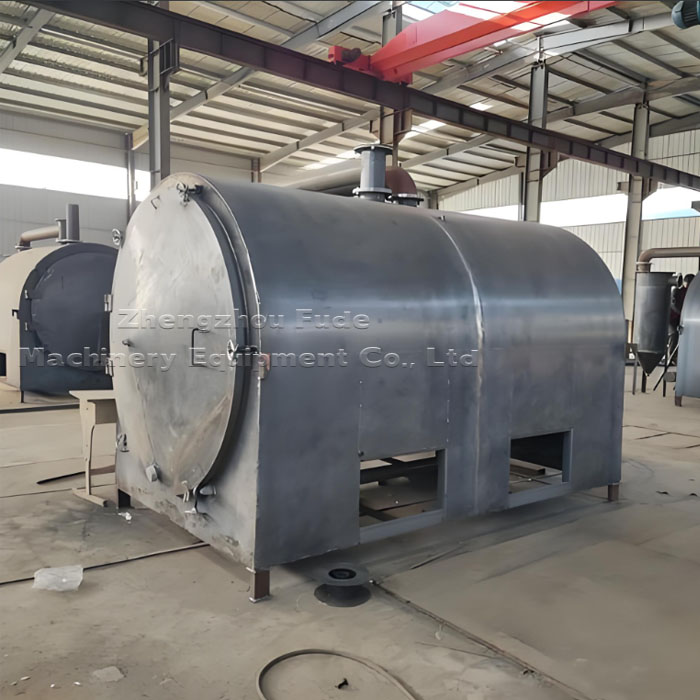
Multiple uses of carbonization machines
There are three types of carbonization furnaces, ordinary type (can only be used for producing charcoal, cannot collect gas); Wood carbonization equipment (used for carbonizing tree branches, wood blocks, coconut shell blocks, furniture factory scraps, etc.) can be equipped with a gasifier device to recover gas and convert it into gas for self use or other purposes in the carbonization furnace; Carbon powder production line (the machine used for producing carbon powder can carbonize rice husks, sawdust, and bamboo powder into carbon powder, which can be processed into activated carbon).
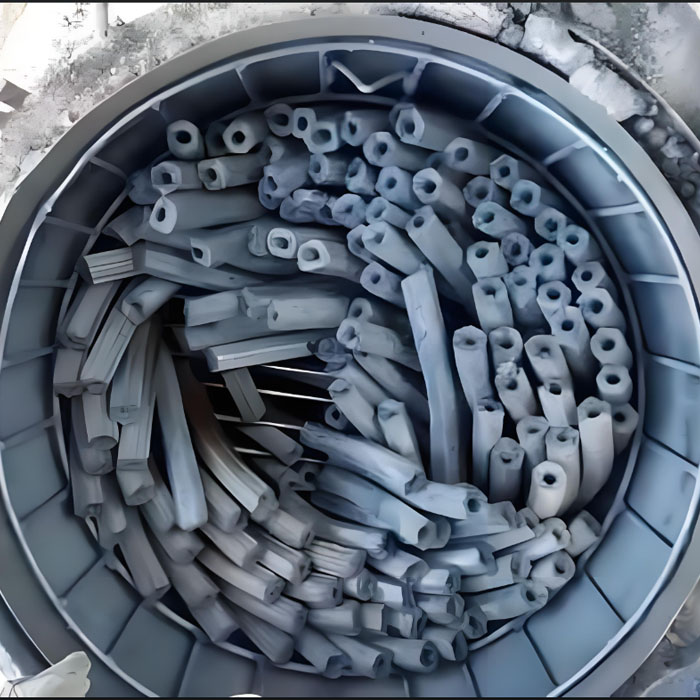
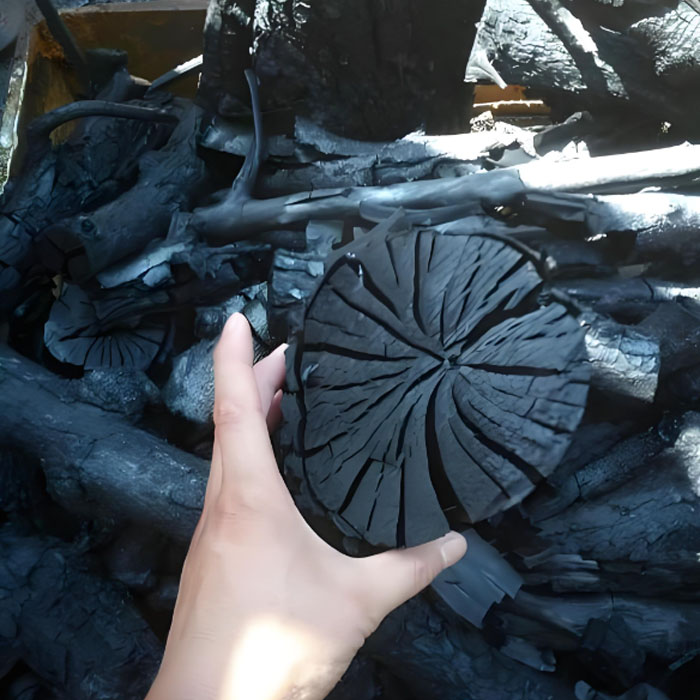
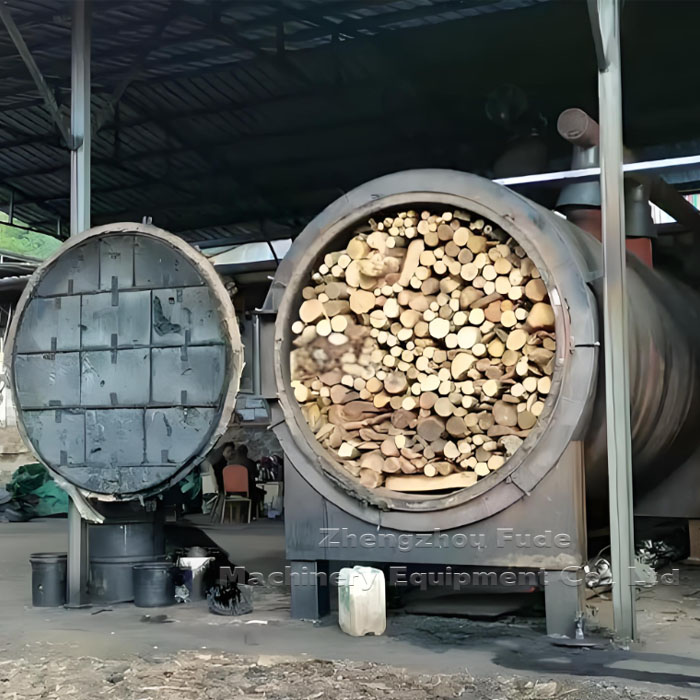
A continuous carbonization furnace is a series of equipment for charcoal machines that dry distills, carbonizes hydrogen free wood materials (with a volume of less than 15mm) containing carbon, such as wood chips, rice husks, peanut shells, plant straw, and bark, under high temperature conditions in the furnace, with a high carbonization rate.
Upgraded version: Continuous carbonization furnace

The continuous carbonization furnace adopts advanced technology for the recovery, purification, and cyclic combustion of combustible gases such as carbon monoxide, methane, and hydrogen produced during the carbonization process. This not only solves the problem of environmental pollution caused by the thick smoke generated by ordinary carbonization furnaces during the carbonization process, but also solves the problem of thermal energy required by the charcoal machine equipment, fully achieving self-sufficiency, improving the continuity and economy of the equipment, fully utilizing agricultural and forestry residues, turning waste into treasure, and making more contributions to greening the environment.
Wood chips, tree branches, rice husks, bamboo chips, peanut shells, furfural residue, wine residue, coconut shells, coffee shells and other raw materials can all be used as processing principles.
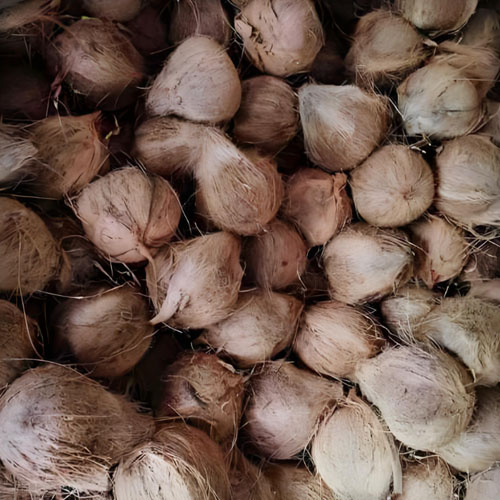
coconut husk
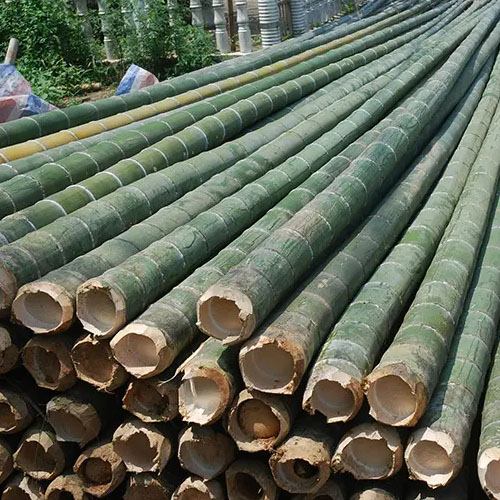
bamboo
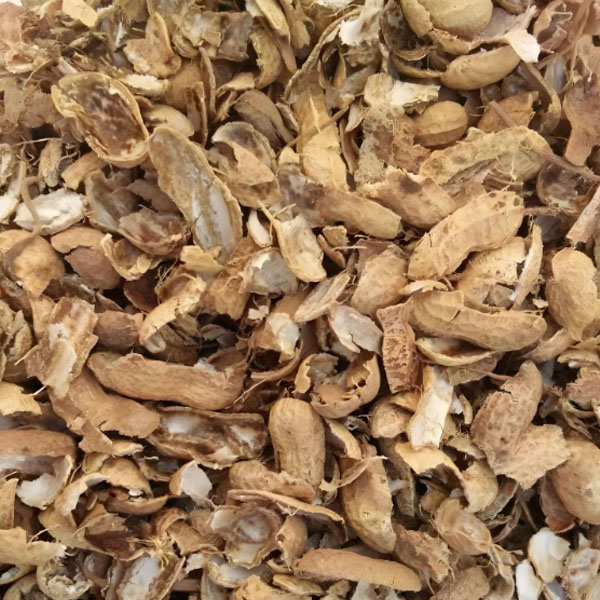
peanut shell
What are the supporting equipment for the mechanism charcoal production line?
The mechanical charcoal machine production line equipment is composed of: crusher, storage bin, drum, belt conveyor, sawdust dryer, cooling system, spiral distributor, bar making machine, steel mesh conveyor, environmentally friendly carbonization furnace and other equipment.
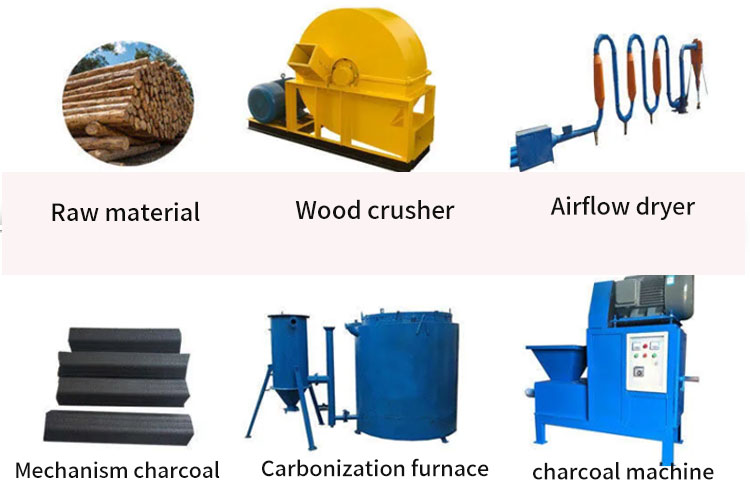
The carbonization process of a carbonization furnace
Drying stage: First, put the raw materials into the carbonization furnace, seal the furnace door, start ignition and heating, and the temperature gradually rises to 120 to 150 degrees Celsius. This stage mainly removes moisture from the wood, and the chemical composition of the wood material remains almost unchanged.
Pyrolysis stage: When the temperature rises to 150 to 275 degrees Celsius, the wood material begins to undergo pyrolysis reaction, and the chemical composition changes. Unstable components such as hemicellulose decompose, producing substances such as carbon dioxide 9, carbon monoxide, and a small amount of acetic acid 9. Carbonization stage. When the temperature rises to 275 to 400 degrees Celsius, the wooden material undergoes rapid thermal decomposition, releasing a large amount of reaction heat
Calcination stage: When the temperature rises to 450 to 500 degrees Celsius, the charcoal is calcined through external heat supply to remove volatile substances remaining in the charcoal and increase its fixed carbon content. The temperature can reach 500 to 1200 degrees Celsius, which is a critical stage to further increase the carbon content of charcoal. Cool and release charcoal. After carbonization is completed, the furnace naturally cools, usually taking several hours, during which the smoke outlet should be closed to ensure the quality of the charcoal.
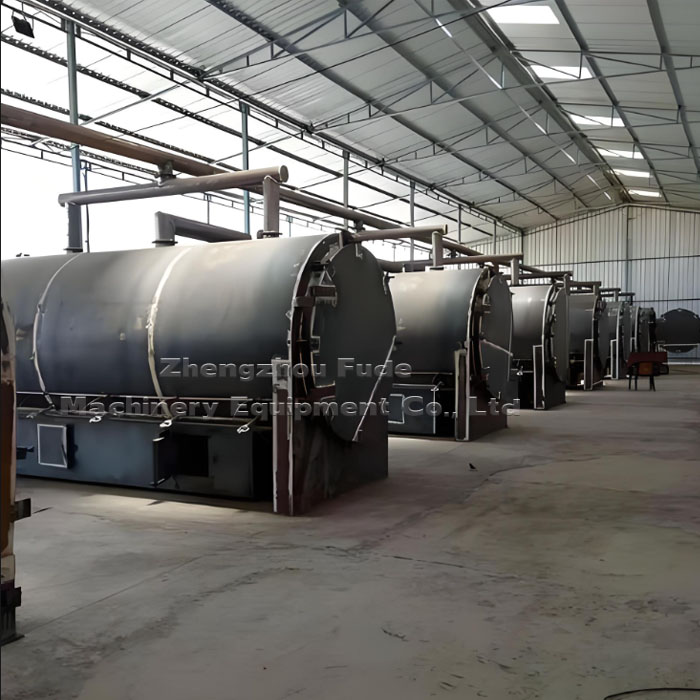
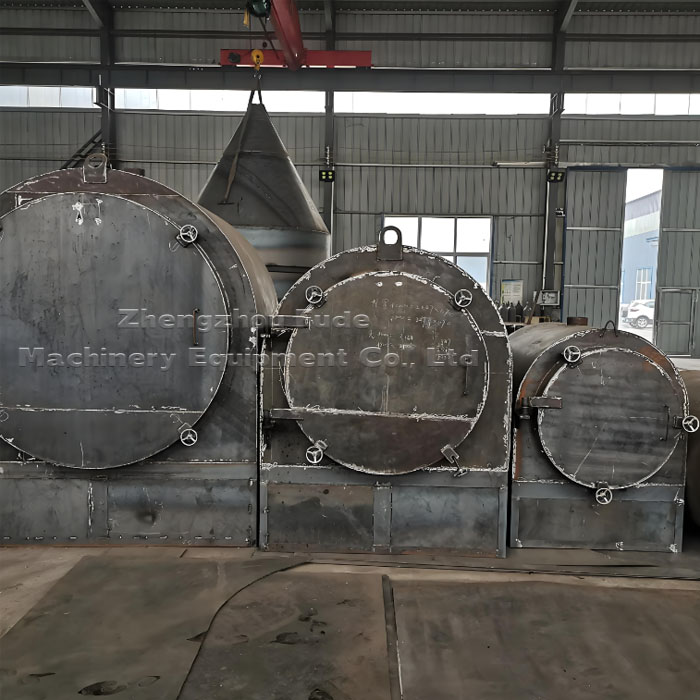

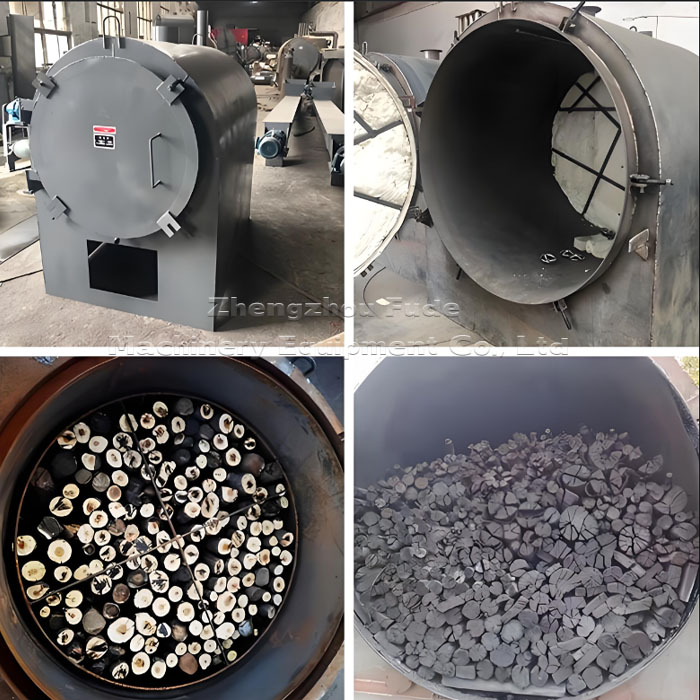
 Fude Machinery-wood crusher manufacturer
Fude Machinery-wood crusher manufacturer
